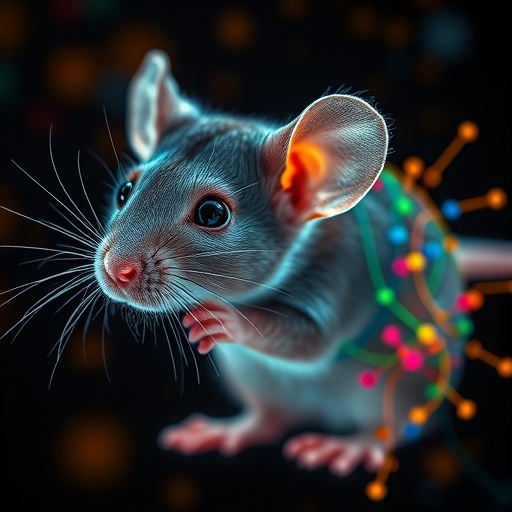
In the intricate field of computational psychiatry, a central challenge is to unravel the neural and computational underpinnings of complex neurodevelopmental disorders such as autism spectrum disorder (ASD). Recent advances have propelled this endeavor forward, highlighting how atypicalities in the updating of cognitive expectations may characterize ASD. A groundbreaking study now bridges these computational insights with detailed neurophysiological data drawn from genetic mouse models, revealing shared anomalies that transcend distinct genetic origins. This research not only refines our understanding of autism’s mechanistic basis but potentially points toward unified therapeutic targets.
Autism spectrum disorder encompasses a heterogenous group of conditions marked by difficulties in social communication, repetitive behaviors, and sensory sensitivities. Neuropsychologically, one recurring finding implicates inflexible updating of internal models in ASD individuals—in other words, a dampened ability to adjust expectations based on new information. This impairment manifests during decision-making processes, where probabilistic inference is essential. Understanding how this computational anomaly arises from genetic influences and how it is instantiated in neural circuits is fundamental for the development of mechanistically informed therapies.
The study at hand ingeniously exploited the well-validated paradigm of rodent psychophysics combined with sophisticated behavioral models to probe the cognitive inflexibility in mice genetically engineered to carry mutations strongly linked to ASD. Specifically, the researchers focused on three distinct genetic perturbations: mutations in Fmr1, Cntnap2, and Shank3B. These genes have been variously implicated in human ASD through molecular studies and clinical genetics, each affecting synaptic function and neural network development in unique ways. By comparing these genotypes side-by-side, the study offered a rare opportunity to disentangle genotype-specific effects from common behavioral phenotypes.
.adsslot_kLIK1Xi5j3{width:728px !important;height:90px !important;}
@media(max-width:1199px){ .adsslot_kLIK1Xi5j3{width:468px !important;height:60px !important;}
}
@media(max-width:767px){ .adsslot_kLIK1Xi5j3{width:320px !important;height:50px !important;}
}
ADVERTISEMENT
At the heart of the experimental design was a decision-making task sensitive to prior expectations, where mice had to integrate past sensory input to inform current choices. This task is analogous to Bayesian inference processes in the brain, which involve continuously updating beliefs about the world in light of incoming evidence. Intriguingly, all three ASD mouse models exhibited a significant reduction in the updating of these prior expectations, signifying a conserved computational deficit independent of the precise genetic mutation. This inflexibility mirrors computational psychiatry findings in human ASD populations and underscores its potential role as a core phenotype.
Crucially, the investigation went beyond behavioral metrics, leveraging brain-wide single-cell extracellular recordings. The electrophysiological data provided a granular view of neural population dynamics across sensory and frontal cortical areas. In neurotypical animals, prior information is encoded robustly in sensory cortices and flexibly adjusted via interactions with frontal regions involved in executive control. However, in ASD mouse models, this encoding landscape was profoundly altered. The data revealed a shift in the cortical locus of prior information representation—from sensory to frontal areas—indicating a fundamental reorganization of hierarchical neural computations.
This reweighting of prior encoding was accompanied by distinctive firing patterns. Frontal cortical neurons in ASD-model mice showed heightened sensitivity to deviations from the long-established prior, in effect encoding prediction errors with exaggerated magnitude. Conversely, sensory cortical neurons failed to differentiate between expected and unexpected sensory inputs, suggesting a blunting of sensory prediction signals. This neural signature may underpin the observed behavioral rigidity: if sensory regions do not distinctly signal discrepancies from predictions, higher-order areas may compensate by over-representing errors, ultimately skewing decision-making processes.
From a computational standpoint, these neurophysiological findings elaborate on predictive coding theories of ASD. According to this framework, the brain continually generates hypotheses about sensory inputs and adjusts those hypotheses based on prediction errors—discrepancies between expected and actual stimuli. The observed shift in encoding and amplified frontal error signals likely reflect an imbalance in this predictive machinery, resulting in overly rigid expectations and impaired flexibility. This is a critical advance, translating abstract computational ideas into concrete cellular and circuit-level mechanisms.
Importantly, the convergence of these neurophysiological and behavioral phenotypes across genetically distinct mouse models suggests that diverse genetic perturbations can give rise to common computational anomalies. This challenges the notion that ASD’s heterogeneity arises purely from distinct pathways and highlights the possibility of convergent disruptions at the level of cortical processing. Such convergence may reflect shared maladaptive network dynamics or synaptic dysfunctions that emerge regardless of upstream genetic differences.
The implications of this research extend beyond basic science. By delineating specific circuit-level alterations linked to inflexible prior updating, the study provides novel targets for intervention. Therapeutic approaches aimed at restoring balanced sensory and frontal cortical functions or modulating aberrant prediction error signals could potentially ameliorate core cognitive inflexibilities in ASD. Furthermore, the rodent behavioral paradigm validated here offers a robust platform for preclinical testing of pharmacological or neuromodulatory treatments designed to enhance cognitive flexibility.
The multidisciplinary approach, combining advanced psychophysics, computational modeling, and comprehensive neurophysiology, embodies a gold standard in translational neuroscience. The precise delineation of ASD-associated computational deficits at multiple levels—from behavior to neural firing patterns—illustrates the power of integrating data across scales. This also establishes a model system to systematically investigate how genetic mutations perturb circuits to cause behavioral phenotypes, informing both diagnosis and therapy.
Moreover, the findings contribute a fresh perspective on the cortical hierarchy and its role in neurodevelopmental disorders. The sensory-to-frontal cortical shift in prior encoding exemplifies how developmental genetic disruptions can restructure fundamental brain computations. This notion aligns with emerging views that ASD represents a disorder of hierarchical brain organization, with repercussions for how sensory information is integrated, interpreted, and acted upon.
Collectively, this study sheds luminous insight into a core computational hallmark of autism—failure to flexibly update prior beliefs—and its neuronal correlates across distinct genetic mouse models. The evidence indicates that, despite genetic diversity, ASD may be marked by conserved alterations in the balance and localization of predictive coding processes. This unified framework bridges genotype to phenotype, opening avenues toward targeted computational and circuit-based interventions.
As neuroscience further embraces computational psychiatry frameworks, studies like this one exemplify the fruitful synergy between computational theory and experimental neurobiology. They highlight how dissecting brain function through the lenses of probabilistic inference and predictive coding can unveil fundamental mechanisms in neuropsychiatric disorders. This cross-disciplinary integration may accelerate the discovery of biomarkers and novel therapies capable of improving cognitive flexibility and quality of life for individuals with ASD.
In conclusion, by meticulously characterizing both behavioral rigidity and its neural substrates in multiple ASD mouse models, this research uncovers a common neurocomputational anomaly that unites diverse genetic causes of autism. This convergence at the level of cortical computations and representations redefines how we conceptualize ASD pathophysiology and guides future scientific and clinical efforts toward shared mechanisms rather than fragmented symptom clusters. As such, it represents a pivotal milestone in the quest to translate genetic discoveries into meaningful interventions.
Subject of Research: Computational and neural mechanisms underlying inflexible updating of expectations in mouse models of autism spectrum disorder.
Article Title: A common computational and neural anomaly across mouse models of autism.
Article References:
Noel, JP., Balzani, E., Acerbi, L. et al. A common computational and neural anomaly across mouse models of autism. Nat Neurosci (2025). https://doi.org/10.1038/s41593-025-01965-8
Image Credits: AI Generated
Tags: autism spectrum disorder researchbehavioral models in rodent psychophysicscognitive expectation updating in ASDcomputational psychiatry and autismdecision-making processes in autismgenetic influences on autism behaviorgenetic mouse models of autisminflexible cognitive models in ASDmechanistic therapies for autismneural underpinnings of autismneurophysiological data in autismtherapeutic targets for Autism



